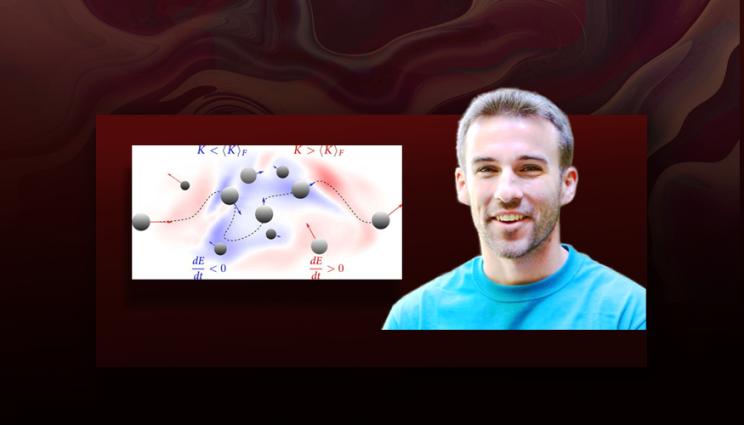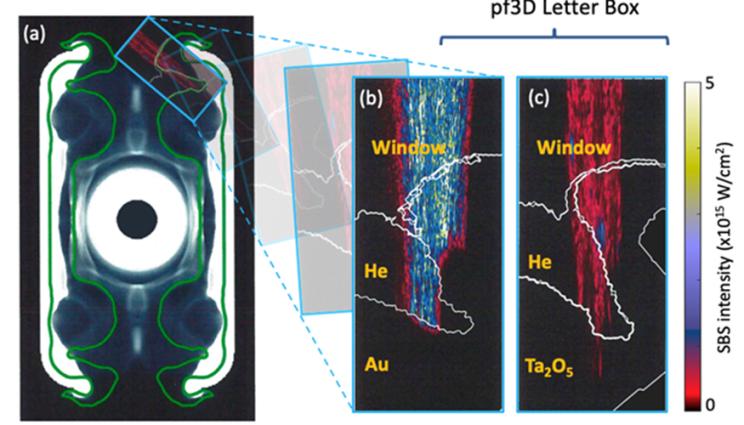2022-02-16 ローレンスリバモア国立研究所(LLNL)
New research conducted at Lawrence Livermore National Laboratory (LLNL) analyzes three-dimensional particle-laden, isotropic turbulence to develop an understanding of inertial particle dynamics from a kinetic energy perspective.

Kyle Pietrzyk, a graduate student at Stanford University who worked at LLNL as a 2020 High-Energy-Density Physics summer intern, is the lead author of work looking at why particles cluster in turbulent flows.
Particle-laden flows are found in a variety of applications such as rain droplets in clouds, wind-driven sand dune sprays, fluidized bed reactors and soot formation during combustion processes. For more than 30 years, it has been well-established that particles do not move with the surrounding flow and tend to form clusters.
The work was selected as a featured article in the January issue of Physics of Fluids with Kyle Pietrzyk, a graduate student at Stanford University who worked at LLNL as a 2020 High-Energy-Density Physics summer intern, serving as lead author, with LLNL’s Design Physics Division staff members Jeremy Horwitz, Fady Najjar and Roger Minich serving as co-authors.
“In engineering contexts such as in internal combustion engines, these clusters can reduce system efficiency by reducing the rate of mixing and heat transfer, while in the atmospheric context, clustering allows smaller droplets to collide and form bigger droplets — which is necessary for the droplets to fall efficiently from cloud to ground,” Horwitz said. “Therefore the study of particle clustering remains an active area of research and this study provides further physical insight into how and why clusters form.”
Pietrzyk used a database for 3D particle-laden isotropic turbulence from Stanford University to conduct the research. The team examined particle clustering by studying particle-laden isotropic turbulence, which is a model problem that captures many of the physical processes present in a cloud. The team also observed particle accumulation in areas of low-flow kinetic energy over time.
Paper outlines two key findings
Pietrzyk said in the first key finding, the researchers observe a consistent particle behavior in simulations of 3D particle-laden isotropic turbulence across a range of Stokes numbers — the ratio of particle response time to the fluid characteristic time scale.
The team describe this behavior in the following steps: particles losing kinetic energy are often found in regions of low-flow kinetic energy. Because of their energy loss, these particles begin to move slowly through the low-flow kinetic energy regions and end up spending the most amount of time there. Ultimately, an accumulation-like behavior in low-flow kinetic energy regions is displayed over time, as particles will statistically spend more time in such regions than other regions of the flow.
This behavior was extracted from the statistical evidence provided in the publication.
The team also provides supporting evidence by analyzing a derived-particle kinetic-energy equation. The team shows that single snapshots of the turbulent flow may not be sufficient to observe the behavior especially at high Stokes numbers, but over time, the statistics suggest that the team’s proposed behavior is maintained.
The second finding is a stochastic model, such as the Fokker-Planck equation, for the particle kinetic energy probability density function. The team looked at colored noise in this model and fit the model to the simulation data with physically reasonable parameters. Overall, the work provides a perspective of particle clustering in turbulence from the lens of kinetic energy.
“We hope it will be useful for future works and inspire further investigations into preferential concentration from new perspectives,” Najjar said.
This research is a great benefit to LLNL since it is key to understanding how turbulence affects particle evolution and clustering in complex multiphase flows. This effort will provide important components for predictive computational tools to model detailed particle-turbulence mixing processes.
“Particle clustering is considered a basic research issue in applied research for star and galaxy formations, sediment flow and erosion in riverbeds, as well as in dust storms, which pose visibility and health risks and can damage vehicle engines,” Horwitz said.
Horwitz said it is worth stressing the benefit of the work from a communication standpoint.
“The internship was completed under unusual and stressful circumstances given the COVID pandemic,” Horwitz said. “The ability of Kyle and LLNL researchers to keep up regular communication, conduct rigorous research and ultimately publish the findings is a testament to Kyle’s resolve and is emblematic of the broad effort that everyone at the Lab has contributed during these difficult times. It’s one example of countless others of LLNL staff stepping up to meet programmatic objectives despite these trying times.”
ABSTRACT
We analyze three-dimensional particle-laden, isotropic turbulence to develop an understanding of inertial particle dynamics from a kinetic energy perspective. Data trends implying inhomogeneous sampling of the flow by particles are identified and used to support a proposed particle behavior: particles appear to accumulate in regions of low flow kinetic energy over time because they lose kinetic energy and slow down in such regions, ultimately causing them to spend more time there. To elucidate this behavior, we derive a particle kinetic energy equation from the particle momentum equation, which incorporates inertial effects through the Schiller–Naumann drag correlation. Upon extracting fundamental physics from this equation, hypotheses regarding the role of the Stokes number in the temporal change of particle kinetic energy and the previously proposed particle behavior are evaluated using simulation data considering three Stokes numbers. Finally, a Fokker–Planck equation is used to derive the steady-state probability density function of the particle kinetic energy. The model fits the simulation data well and provides a tool for further investigation into understanding preferential concentration, as well as a reduced order model for predicting particle kinetic energy in turbulent flows.



